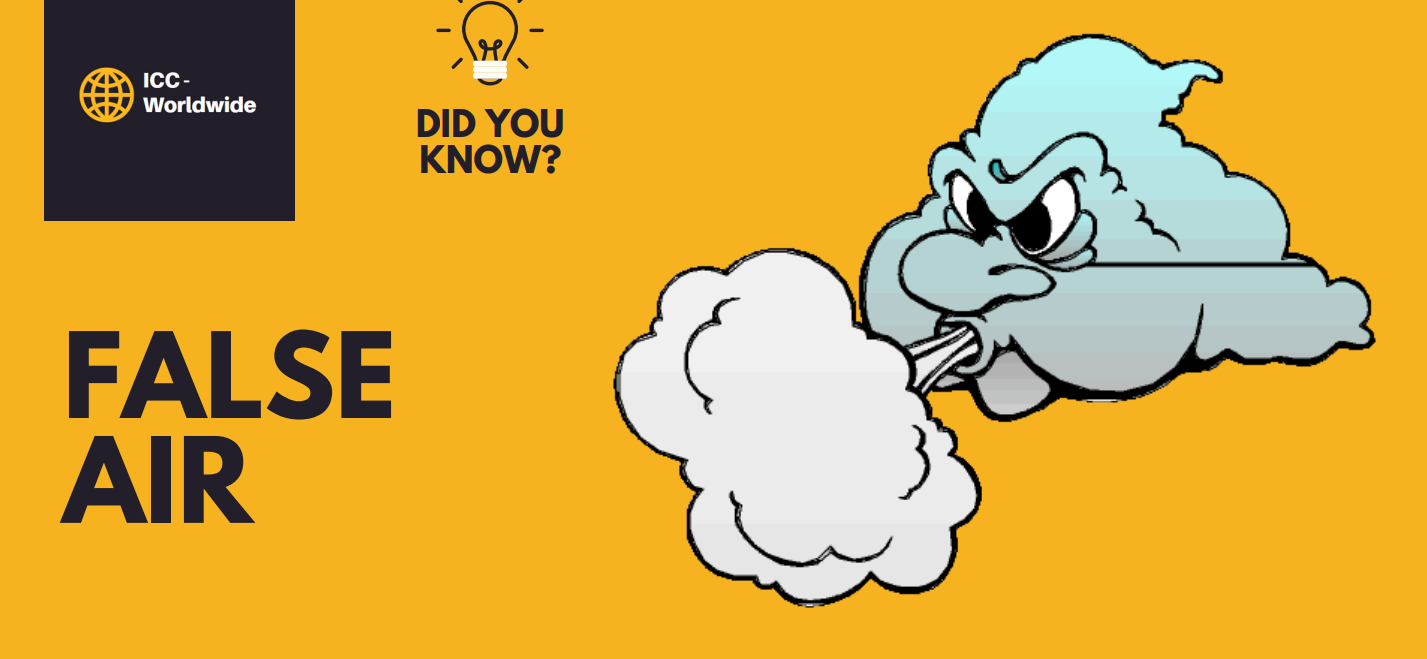Contents
The Hidden Enemy: False Air and Its Impact on Cement Production

TO Download this post and all the books and excel sheets and my personal notes and presentations I collected about cement industry in the last 30 years click the below paypal link
Have you ever heard of “false air” in industrial processes? You may think, “How can something as natural as air be a problem?” But in the world of cement production, false air can be a serious hidden enemy, causing inefficiencies, increasing energy consumption, and ultimately costing companies significant sums of money. Let’s dive into this fascinating topic and explore why false air ingress is such a challenge—and how you can help solve it.
What is False Air?
Simply put, false air is any unwanted air that enters the system during the cement production process. It sneaks in through leaks in equipment, ducts, or anywhere air shouldn’t be entering. Think of it like a draft in your house when a window is left slightly open, but on a much larger scale and with far greater consequences.
How to Spot False Air Ingress
So, how do you know if you have a false air problem in your system? One tell-tale sign is an increase in oxygen levels between two points in the process. Cement plants carefully measure the oxygen content at different stages, and when they find unexpected increases in oxygen, it usually means false air is making its way in.
To quantify the false air, specialists measure both the oxygen content and gas flow at key locations. With this data, they can determine how much unwanted air is entering different parts of the system, such as the kiln preheater or mill system.
Why You Should Care About False Air
False air ingress may seem like a minor issue, but it has a cascade of negative effects on the cement production process. Here’s why you should take it seriously:
- Increased Energy Consumption: Extra air entering the system forces the process to consume more electric and thermal energy. You end up using more fuel to maintain the same level of production.
- Unstable Operations: False air can throw off the balance in your system, causing instability and making it difficult to maintain optimal performance.
- Higher Wear and Tear: Fans and other equipment have to work harder to handle the additional air, leading to increased wear and tear.
- Lower Productivity: With energy being wasted and operations becoming unstable, the overall productivity of the plant decreases.
In short, false air impacts your plant’s bottom line and environmental footprint.
The Environmental Impact
If you think the financial cost is bad, the environmental impact is even more shocking. For instance, a 1% increase in oxygen content in a rotary kiln (from 2% to 3%) due to false air ingress can cause a 9000-ton-per-day kiln to consume an extra 8000 tons of Petcoke fuel per year! This not only leads to higher fuel costs but also increases CO₂ emissions, exacerbating the environmental impact of cement production.
Imagine the environmental consequences of burning more fuel just to handle unwanted air! The excess fuel consumption leads to more CO₂ emissions, which means a larger carbon footprint for the plant.
Can We Measure and Eliminate False Air?
Yes, we can! But first, it requires a thorough assessment by specialists who are well-versed in cement production processes. ICC (International Cement Consultants) offers a technical assessment program that helps cement plants identify sources of false air, measure its impact, and eliminate it effectively. Their team of experts visits cement plants, runs diagnostic tests, and recommends actions that can help reduce both electrical and thermal energy consumption, ultimately lowering your plant’s carbon footprint.
Requesting a Technical Assessment
If you think false air might be impacting your cement plant’s performance, it might be time to get help from the experts. ICC specialists can visit your plant, assess the situation, and provide you with actionable steps to eliminate false air ingress.
For more information or to request a visit from the ICC team, you can visit their website or contact them through email:
- Website: http://www.cementspecialist.org/
- Email: joao.butkus@cementspecialist.org, juan.ortega@cementspecialist.org, roberto.almeida@cementspecialist.org, abilio.galli@cementspecialist.org
Conclusion: Fight Back Against False Air
False air is like a stealthy intruder that quietly robs your cement plant of energy, productivity, and money. By understanding its impact and taking steps to measure and eliminate it, you can make your operations more efficient and environmentally friendly. Don’t let false air sneak in—take action today and protect both your profits and the planet.
Reference:
http://www.cementspecialist.org/
TO Download this post and all the books and excel sheets and my personal notes and presentations I collected about cement industry in the last 30 years click the below paypal link
